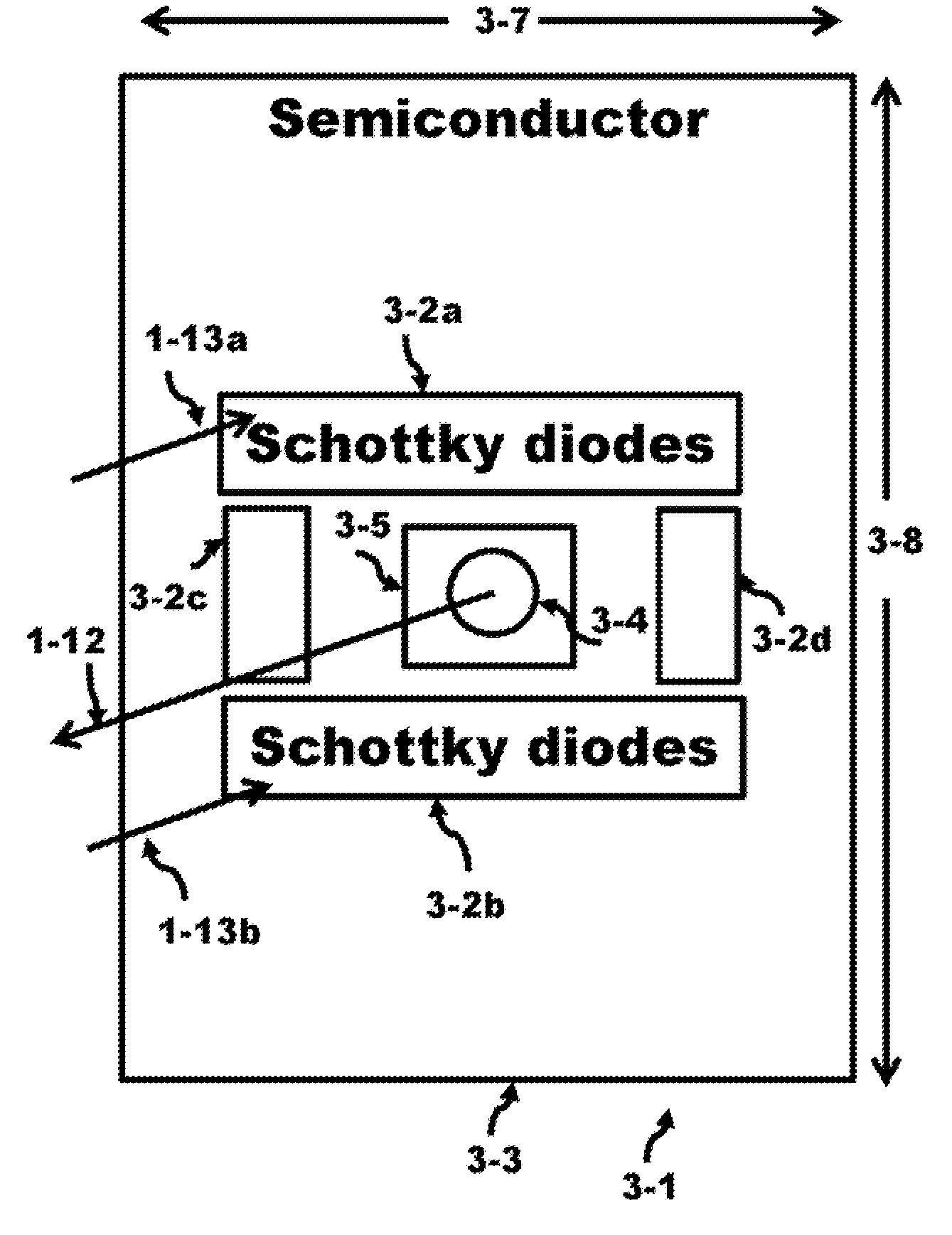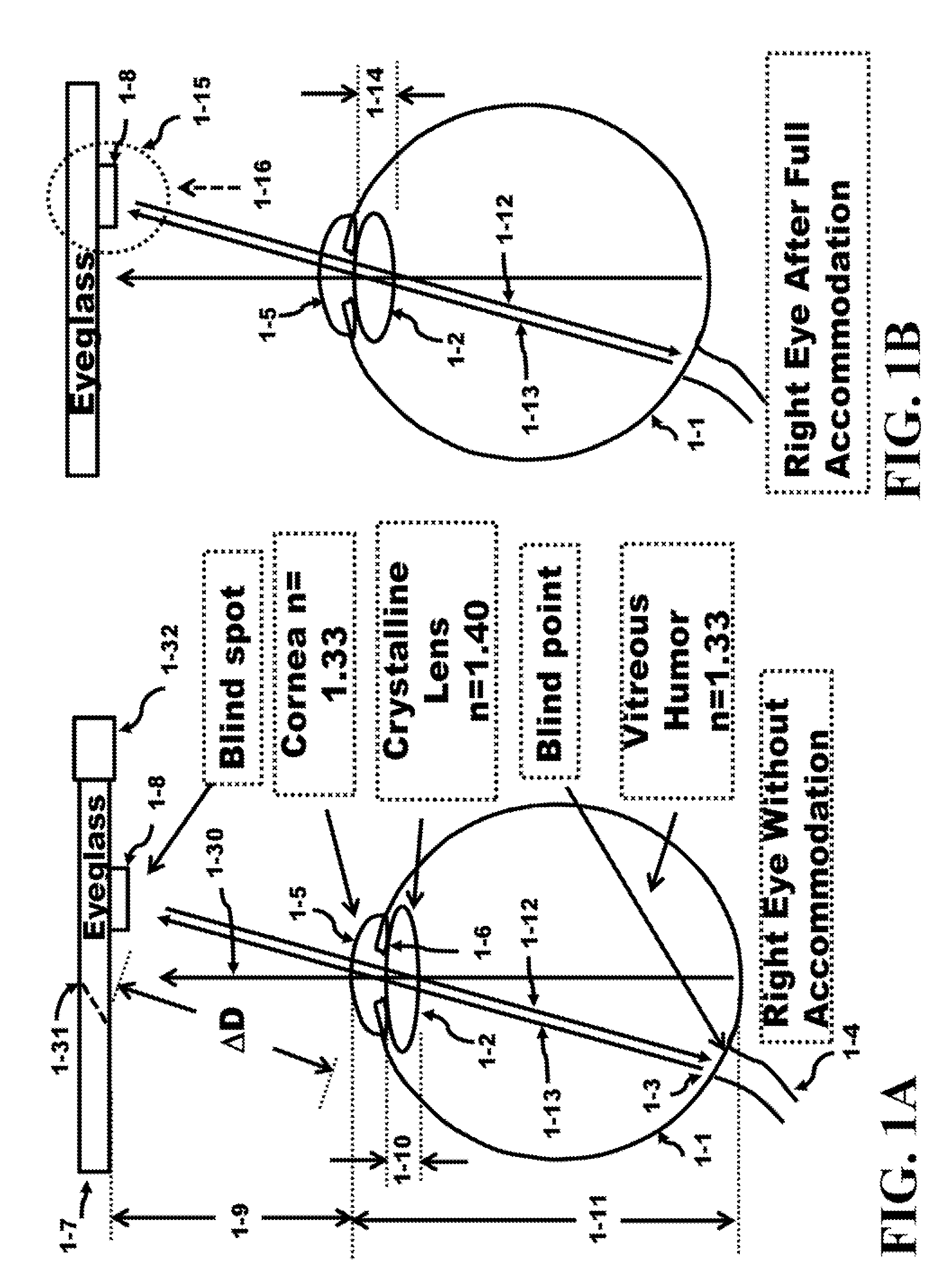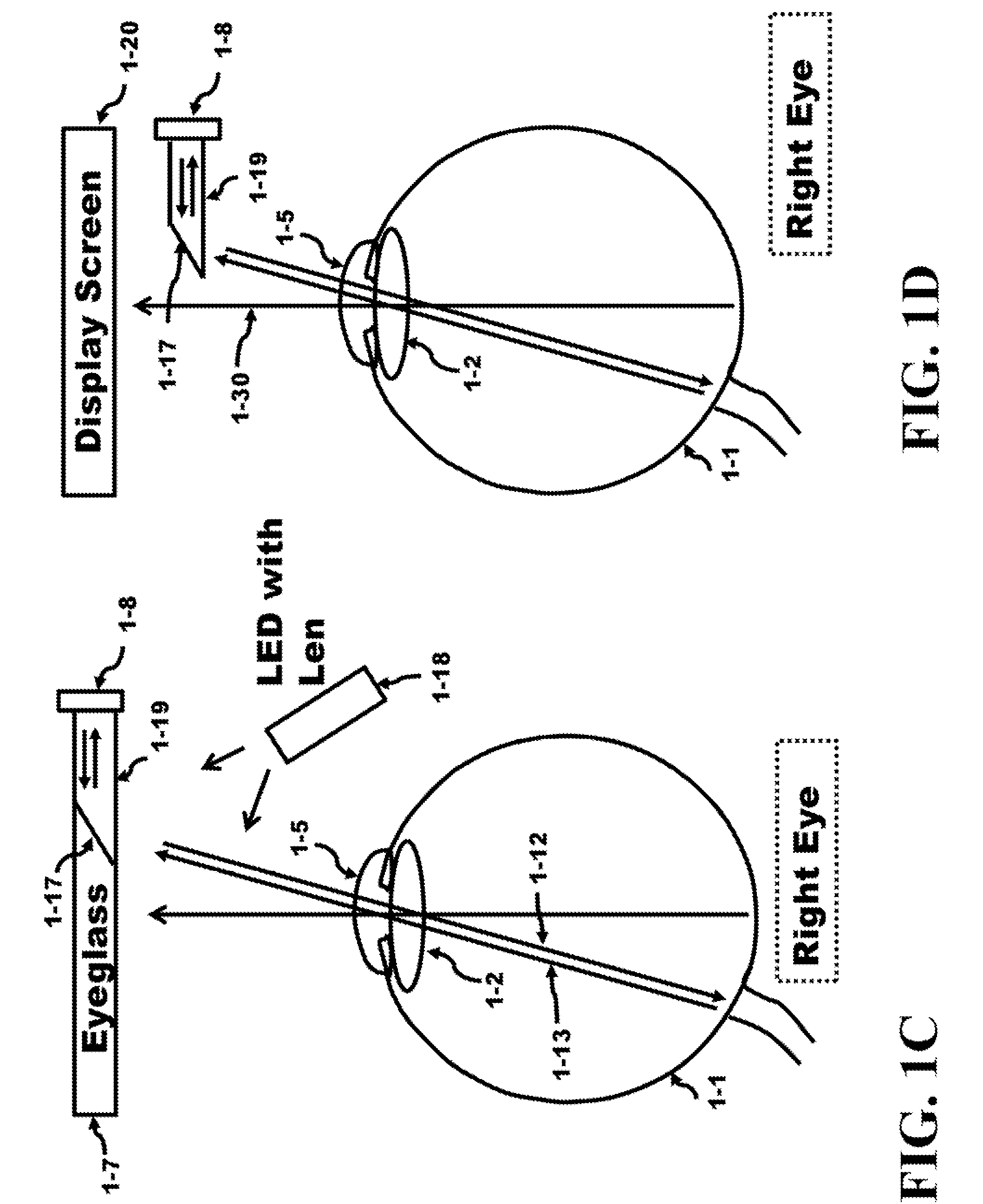Method and Apparatus for a Self-Focusing Camera and Eyeglass System
a self-focusing camera and eyeglass technology, applied in closed circuit television systems, television systems, instruments, etc., can solve the problems of decreasing camera cost, achieve the effects of improving the quality of reconstructed long-range 3-d, increasing the base distance between two plenoptic cameras, and facilitating the use of the system
- Summary
- Abstract
- Description
- Claims
- Application Information
AI Technical Summary
Benefits of technology
Problems solved by technology
Method used
Image
Examples
Embodiment Construction
[0078]FIG. 1A presents a pictorial of the right eye, an eyeglass, a source of electromagnetic radiation, a sensor of electromagnetic radiation, and components of the right eye. The eye measuring system 1-33 comprises a source and a detector 1-8 of electromagnetic radiation to measure the total flight path of the electromagnetic radiation propagation. The electromagnetic radiation exits the source propagates in the right eye 1-1 towards the blind point 1-3 and bounces off the blind point. The incident electromagnetic radiation was reflected from the blind point on the back surface of the eye 1-1 offering at least two advantages; 1) the position of the transparent material 1-19 is located at what is known as being in the blind spot of the eye, a physical location outside the eye where the eye cannot sense the object; and 2) the incident radiation reflects off the surface of the blind point 1-3 on the backside of the eye 1-1 and since this blind point 1-3 does not have light gathering ...
PUM
 Login to View More
Login to View More Abstract
Description
Claims
Application Information
 Login to View More
Login to View More - R&D
- Intellectual Property
- Life Sciences
- Materials
- Tech Scout
- Unparalleled Data Quality
- Higher Quality Content
- 60% Fewer Hallucinations
Browse by: Latest US Patents, China's latest patents, Technical Efficacy Thesaurus, Application Domain, Technology Topic, Popular Technical Reports.
© 2025 PatSnap. All rights reserved.Legal|Privacy policy|Modern Slavery Act Transparency Statement|Sitemap|About US| Contact US: help@patsnap.com



